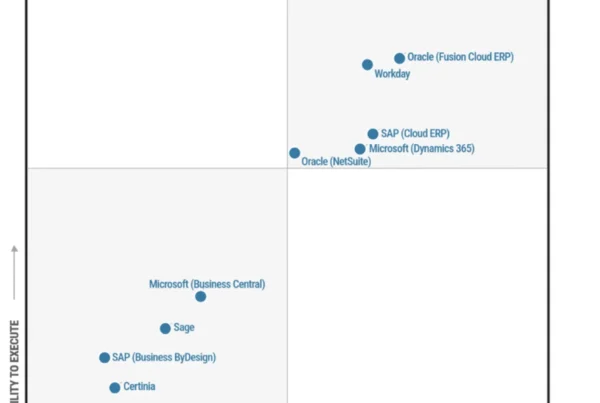In a recent keynote at Microsoft Inspire, Microsoft Chairman and CEO Satya Nadella made this prediction, “The next 10 years are not going to be like the last 10,” and that “Digital technology will be the only way to navigate the headwinds facing business leaders today.” Today, we face is a world of perpetual change with ever-increasing economic, environmental, and social complexities. This brings us to a cumulation of factors that profoundly impact the health and success of individuals and corporations. The opportunity facing business leaders is to find ways to utilize technology to drive a positive impact on business performance and the well-being of society and the environment.
Reduce operating costs with ESG initiatives
It has become clear that ESG (environmental, social, and governance) initiatives are becoming a top business priority for many organizations. The Gartner annual CEO and Senior Business Executive Survey states, “In 2022, environmental sustainability became a top 10 business priority for the first time ever, with 9 percent of the respondents naming it as one of their top three.”1 This focus in priority is for good reason. Studies show that companies that execute effectively on ESG programs can reduce operating costs by up to 60 percent2 and that higher ESG scores correlate to lower costs of capital (6.16 percent compared to 6.55 percent for the lowest ESG scores).3
What is less clear is how businesses execute ESG initiatives in ways that do not require more effort or added expense—effectively, how to do more with less. In his Microsoft Inspire keynote, Satya stated, “Doing more with less doesn’t mean working harder or longer. That’s not going to scale. But it does mean applying technology to amplify what you’re able to do across an organization so you can differentiate and build resilience.” The expectation that we must do more with less is especially relevant when actioning on ESG goals. The approach business leaders must consider is anything that reduces energy costs or increases resource efficiency will be highly beneficial to CEOs, customers, employees, investors, and the environment.
Go paperless with Dynamics 365 Finance
There are many ways to make ESG impact, and perhaps most attractive to business leaders are opportunities that align business processes to ESG outcomes. One very accessible possibility exists in the automation of paper-intensive business processes. For example, Accounts Payable (AP) has historically been plagued by the manual effort and cost required to manage tens of thousands of paper invoices. AP invoicing is heavy with storage, printing, disposal, and document security costs that can easily be mitigated through digitization.
Though the digitization of office paper has been achievable for over a decade, organizations still struggle to phase out paper-laden business processes. Some estimates show that US offices use 12.1 trillion sheets of paper annually and that demand for paper is expected to double before 2030.4 To address this trend, companies should turn to robust and easy-to-use technology to help quickly reduce paper usage.
Invoice capture within Dynamics 365 Finance
Automate your AP process


If your organization is ready to embark on the journey to go paperless, Microsoft is here to help. We are excited to release the preview of Invoice capture within Microsoft Dynamics 365 Finance. Invoice capture will allow our customers to digitally transform the entire invoice-to-pay process within their AP department—delivering better spend control, faster cycle times, and paperless processing, leading to more automation and less waste. With the support of advanced technology, organizations can efficiently drive outcomes that benefit both business interests and the greater good.
Sources
1Gartner CEO and Senior Business Executive Survey.
GARTNER is a registered trademark and service of Gartner, Inc. and/or its affiliates in the U.S. and internationally and is used herein with permission. All rights reserved.
2Five Ways That ESG Creates Value, McKinsey.
3ESG and the Cost of Capital, MSCI.






